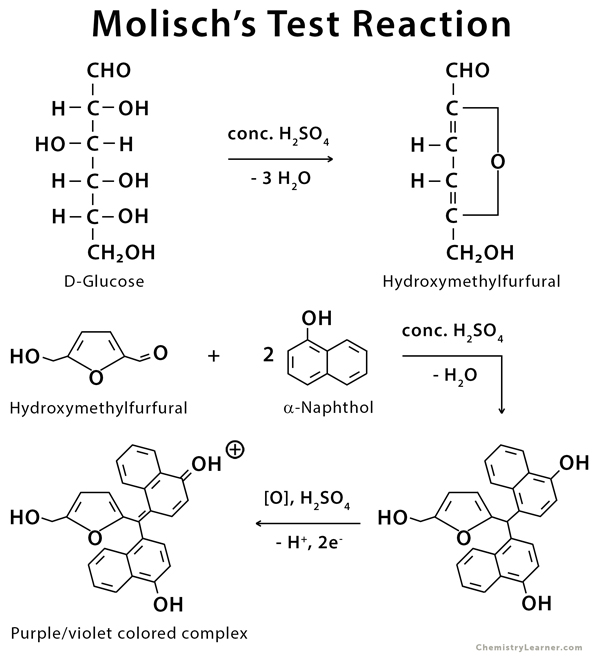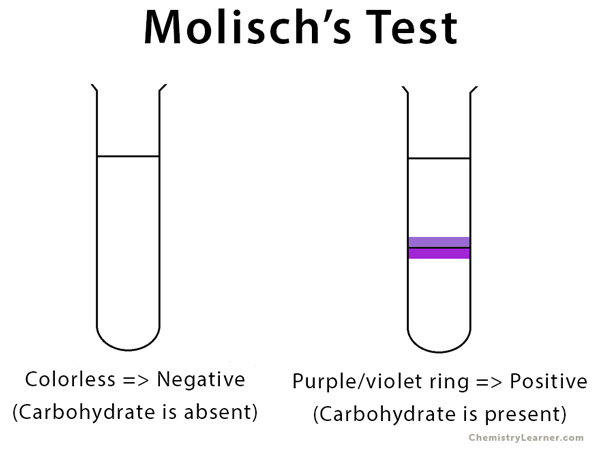Definition: What is Molisch’s Test?
Molisch test is a chemical test to detect carbohydrates (monosaccharide, disaccharide, and polysaccharide) and glycoprotein in an analyte. It can be used to differentiate proteins and amino acids from carbohydrates. The test has been named after Czech-Austrian botanist Hans Molisch.
Principle of Molisch’s Test
In this test, concentrated sulfuric acid (H2SO4) is added to the analyte which hydrolyzes all the glycosidic linkage in the sugar molecules (disaccharide, and polysaccharide) to yield monosaccharide. When monosaccharides are treated with concentrated H2SO4, hydroxyl (OH) groups of sugar are removed in the form of water, and furfural is formed from pentose sugar. Hydroxymethylfurfural is formed from hexose sugar (e.g., glucose). These reactive products condense with α-naphthol to give a purple/violet colored complex.
Preparation of Molisch’s Test Reagent
Molisch’s test reagent is prepared by adding 5% of α-naphthol in ethanol.
Procedure for Molisch’s Test
- Take 2 ml of sugar solution in a dry test tube.
- Add 2 to 3 drops of Molisch’s test reagent.
- Incline the test tube and gently add 2 ml of concentrated H2SO4 along the sides of the test tube.
Result of Molisch’s Test
A purple/violet colored ring is observed at the junction of the two liquids, i.e., Molisch’s test reagent and dehydrated carbohydrate solution. In there is no ring, then the given sample does not contain any carbohydrates.
A positive reaction for Molisch’s test is given by almost all carbohydrates, except tetroses and trioses. Some glycoproteins and nucleic acids also give positive results for this test. They tend to undergo hydrolysis when exposed to strong mineral acids and form monosaccharides.











0 Comments